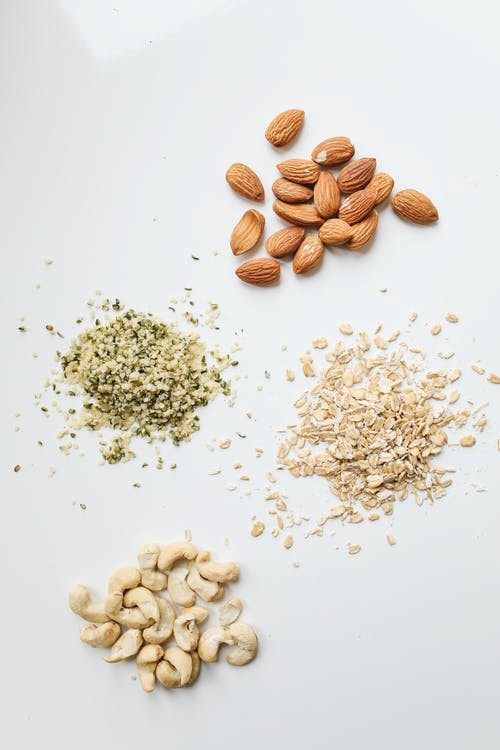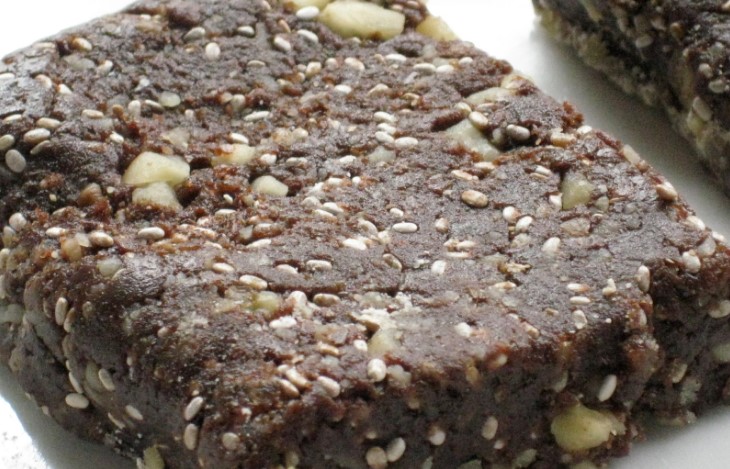Last Updated on October 20, 2022 by admin_hunter
Survival bars are supplemental bars containing high energy foods to provide energy when you don’t have access to a proper meal for one reason or another.
Having them in the form of bars helps in rationing so that consumption can be regulated. They are an essential food supply during emergencies as they pack a lot of energy in compact, manageable packages.
A myriad of recipes for survival bars have been used ever since adopted as an emergency food source. To get us in the zone, we shall go through a traditional homemade survival bar recipe to see what goes into making survival bars.
A Homemade Survival Bar Recipe
Ingredients
- 2 cups of oats
- 2 ½ cups of powdered milk
- 1 cup sugar
- 3 tablespoons of honey
- 3 ounces of jello (your preferred flavor)
- 3 tablespoons of water
Step 1
Mix the powdered milk, sugar, and oats together in a bowl until they are evenly blended.
Step 2
Mix the honey, jello, and water in a separate saucepan and boil them together while stirring the mixture until it comes to a rolling boil, where it continues boiling as you stir.
Step 3
Pour the jello mixture into the bowl containing oats mixture and mix them using a quality mixer to combine all the ingredients. Keep going until there is an even blend of the ingredients. You can keep adding a spoonful of water as you do this until you attain your desired result, which is the dough sticking together when pressed, as much as it will still have a crumbly feel to it. You can mash it with the palm of your hand to confirm when it is fine.
Step 4
Press the dough into a large pan lined with parchment paper to form the desired survival bar shape without sticking onto the pan. You can press it by hand, but it is advisable to use tools such as a tortilla roller, a rolling pin, a glass soda bottle, or a dowel to get an even distribution.
Step 5
Cut the dough into bars; it is extremely hard to cut them once done as they will be hard, easier to break than cut, and impossible to get to the required sizes. This can be done using a pizza cutter or a butter knife. Ensure to cut all the way through so that there is no crumbling as you try to separate them.
Thinner cuts are better as the end result. Thicker bars will be hard to consume if too stocky. Try not to make them too thin because the opposite extreme is also unpleasant; they may get charred while baking.
Step 6
Bake or dehydrate the bars. These are the two methods used to get rid of the moisture, so the bars last longer on the shelves before use. If you are baking, place the pan in a 200˚ oven and let it bake for 1 ½ to 2 hours. The period depends on how moist the bar will be as we try to avoid developing mold while in storage.
If you opt to dehydrate them, you should take them out of the pan, separate them, and load them on dehydrator trays. Then you dry them at low heat (approximately 145˚) for 4 to 6 hours until you are satisfied they are fully dry.
The baked bars will taste better, and the heat improves their stickiness. On the other hand, the dried bars are less likely to stick to the pan or get burned in the process. You will use your discretion to decide.
Step 7
Pack the ready bars in a way that extends their life the longest. Ensure they are completely dry and cool before you proceed. You can wrap them in foil, pack them in a food saver, mylar, or zip-seal bag. They can also be vacuum sealed and stored with oxygen absorbers.
Step 8
Store them in a cool, dry, and dark place. Ensure you label the package with the date you made them for future reference before stashing them away.

Pro Tips for Making Homemade Survival Bars
Doing it yourself comes with the advantage of customizing the outcome to suit your needs and preferences. In light of this, you can and should consider a few things when making your own bars.
Enhancing the Nutritional Value
Survival bars are designed to be calorie-packed to provide energy when needed in the absence of regular food. However, the high caloric content should be accompanied by nutritional content, so they are also beneficial to the body in the long run. Since they are meant to last for several days, you will also want to use ingredients that prolong the energy boost.
Complex carbohydrates provide fiber, minerals, and vitamins, which are critical health nutrients. They should be your primary source of carbohydrates. They take longer to digest and are a more stable source of energy than simple carbohydrates. They are found in starches like legumes, nuts, brown bread, brown rice and pasta, and naturally occurring sugars.
Simple carbohydrates such as refined sugars and syrups are digested faster and give an instant energy boost. However, it is relatively short lived and adds no nutritional value, which is why they are referred to as empty calories.
Some simple carbohydrates like fruits and vegetables also contain dietary fiber and micronutrients like vitamins and minerals. Milk also has simple carbohydrates in lactose, yet it is a good source of protein.
You should balance your ingredients to capture the best from both carbohydrates to get better nutrition without compromising the caloric content.
Determining Portions and Sizes
Survival bars that are bought over the counter tend to have portion breakdowns that provide close to accurate estimations of each bar’s caloric content. It is harder to determine this for your homemade survival bars, but it can be done. Knowledge of your caloric capacity is crucial for survival planning. Our second pro tip addresses what you need and how to determine how much you have made.
While the ideal calorie needs vary depending on variables like the amount of physical activity, age, and metabolism, the ballpark figure for the ideal recommended daily caloric intake for adults is 2,000 for women and 2,500 for men.
We can use this as the base figure to determine how much you will need to survive. You can add a few calories or deduct them, depending on your routine. It is important to note that the more you add, the bulkier your survival bars will be.
The ability to make this choice is one of the benefits of making homemade survival bars. We will use our recipe as an example to calculate our survival bars’ caloric content as a guide of how to estimate yours.
We start by getting the calories contained in all the ingredients:
- 2 cups of oats- Half a cup contains 140 calories, so it has 560 calories
- 2 ½ cups of powdered milk- This translates to roughly 40 tablespoons, and there are 100 calories in every 3 tablespoons, meaning it has 1,333 calories
- 1 cup sugar- This has the capacity of 48 teaspoons, each with 15 calories, contributing 720 calories
- 3 tablespoons of honey- Each tablespoon has 60 calories, so it packs 180
- 3 ounces of jello (your preferred flavor)- The 3-oz package has 320 calories
Water, the other ingredient, doesn’t add calories, meaning our total calories are 3,113.
We can use this figure to determine the number of bars we make out of the dough, which will, in turn, influence how many bars we consume in a day and how much more we should make. It can keep a grown male going for a day and a half and can be cut into 8 bars to be consumed in twos for four servings.
Manipulating the Taste
A homemade survival bar is like a blank canvas on which you can pour out all your creativity, likes, and desires. You have the option of avoiding the bland tastes associated with survival bars by infusing your selection of ingredients and seasoning.
The jello flavor, for instance, can be your preferred fruit. Some feel there is already too much sugar in survival bars to add a sugary syrup. There is orange and lemon flavored jello to counter the sweetness.

The Freedom to Incorporate Unusual Ingredients
Your typical survival bars are made to last up to 30 years with machine processing and sealing, incorporating oxygen absorbers and the latest technology. Homemade survival bars also have a long shelf life, but their shelf life estimates are usually lower due to the less advanced production process; 3, 5, to 10 years. This is both limiting and liberating.
While you may have to consume them earlier, it unshackles you to incorporate more unconventional ingredients.
Survival bar ingredients avoid natural fruits and anything with oil as they tend to go rancid faster, yet energy comes from fats, protein, and carbohydrates. Some of these are those complex carbohydrates we mentioned earlier.
Since we are looking at a relatively shorter shelf life, we can add ingredients like peanut butter, raisins, and other dried fruit that provide more minerals, vitamins and protein, help you feel full longer and improve the homemade taste bar.
Health Considerations
Doing it yourself comes with responsibilities as well. You will be responsible for ensuring your survival bars do not adversely affect any of your intended consumers. This covers everything from hygiene, proper storage, ensuring they are fit for consumption and that all special needs like allergies and intolerance (like gluten, nuts, lactose) are considered.
It can be very ironic to lose lives through the consumption of survival food.
There you have it. The next time you are updating your survival food supplies, keep in mind that you aren’t limited to the same bland tasting survival bars that are always lacking that one thing you like. You can even have a taste of what you will be consuming during those emergencies in advance. You have the power to influence your experience.

